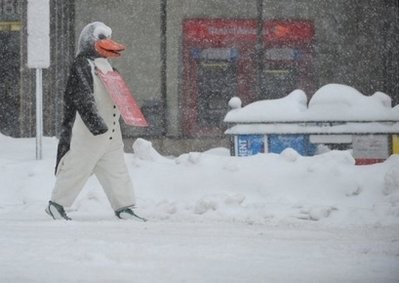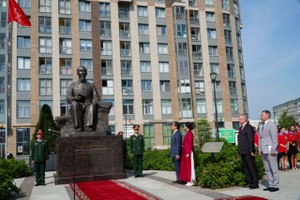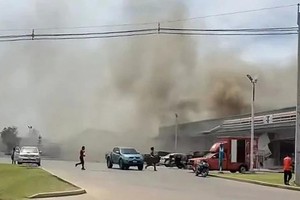Residents of the US East Coast began digging out from under a thick blanket of snow Sunday after a record-breaking blizzard paralyzed Washington and the region, snapping power to 350,000 residents and killing two people.
The monster storm stretched more than 600 miles (1,000 kilometers) from eastern Indiana across into New Jersey and then down as far south as North Carolina, affecting tens of millions of Americans.
With winds gusting at almost 60 miles (90 kilometers) an hour, meteorologists said they had recorded snowfall as high as 38 inches (96 centimeters) near Baltimore, Maryland -- a record.

The heavy, sticky snow toppled trees and snapped power lines, leaving more than 350,000 people without electricity in Maryland and neighboring Virginia.
"Snowmageddon here in DC," President Barack Obama told Democrats in a speech, only a year after chiding the capital for over responding to small snowfalls.
The National Weather Service put the Washington-Baltimore metropolitan area under a rare 24-hour blizzard warning until 10:00 pm Saturday (0300 GMT Sunday).
Forecasters warned residents to hunker down, with no let-up in the weather for most of the day, and said chilly temperatures on Sunday would mean the wet snow would swiftly turn icy.Related article: Monster US storm boon for forecasters: expert
"Officially this won't break records in DC, but unofficially, you bet it will," Paul Kochin, an expert in northeast weather systems, told AFP.
"It's very rare to have two such big storms in one season," he said, after the capital region was already crippled by a smaller but still massive storm in December.
Maryland and Virginia, were bearing the brunt of the storm and seeing the highest snowfalls, he said.
"It's pretty rough out there," agreed Ed McDonough from the Maryland Emergency Management Agency.
In terms of the Baltimore-Washington corridor, "this is probably the biggest storm we've ever had," he said.
Emergency teams struggled to repair the power cuts were hampered by the miserable weather.
"We have a lot of scattered outages and the road conditions are not really working with us," admitted Pepco spokesman Andre Francis, pleading for patience as some customers were told the blackouts could last days.
Some 200 National Guardsmen had been deployed across Maryland, while in Virginia police confirmed that a father and son were killed Friday when they stopped to help a stranded car.
Police in the state had responded to some 3,167 calls for help, more than two-thirds of which were due to car accidents or stranded vehicles.
Three state troopers were also injured in storm-related accidents in Virginia.
All flights out of the capital's Reagan National airport were canceled, along with most flights out of Dulles International Airport in Virginia, while there was limited service at Baltimore.
A hangar roof collapsed at the Dulles Jet Center early Saturday according to Rob Yengling, Metropolitan Washington Airports Authority spokesman. Five people spending the night inside to shelter from the storm escaped without injuries.
States to the north like Pennsylvania, New Jersey and Delaware are more used to heavy snowfalls and got their share of the great blizzard of 2010.
Philadelphia, Pennsylvania was buried by 28.5 inches (68 cm), reportedly the city's second deepest all-time snowfall, while Wilmington, Delaware counted 26.5 inches, according to the NWS.
And 27.5 inches were reported at American University in Washington, DC.
The storm generated equal parts frustration and fascination.Related article: Washington DC, the world's newest ski resort
In the normally bustling capital, sight-seers walked thigh-deep in the snow along the famous national mall, or went cross-country skiing down eerily empty boulevards.
Alix Lawe, who works with the US Air Force, was out for a run in the snow, and told AFP: "It's so fun. I'm from Florida, I've never seen so much snow."
Snow plows were out trying to keep emergency routes and main highways clear, but most officials said it would take days to reach the smaller streets, and warned of a difficult Monday morning commute.
The capital's transportation system has shut down 40 above ground subway stations and halted bus service, meaning transport links between Washington and its heavily-populated suburbs were snapped, with most major roads impassable.
























